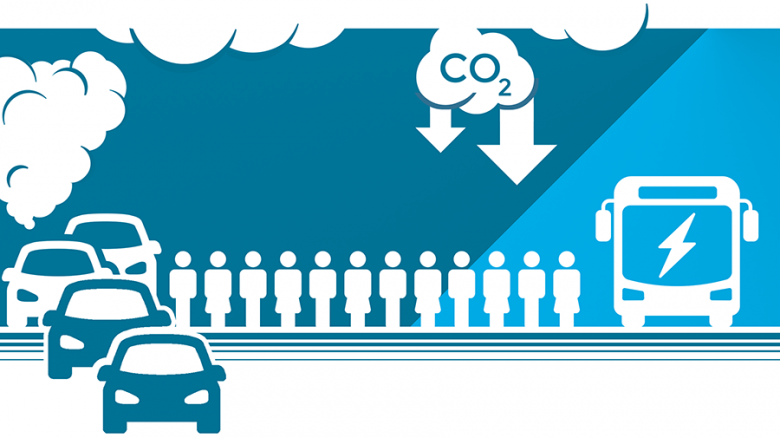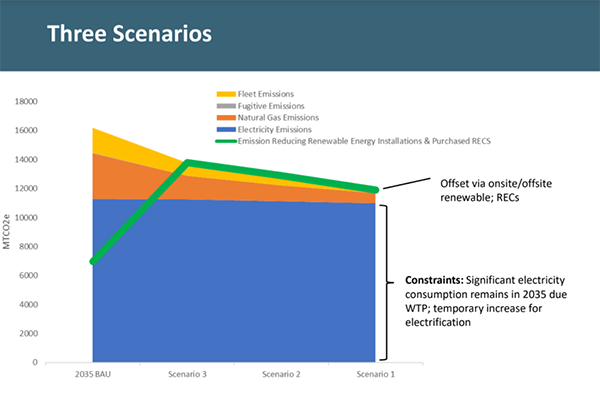
Public transportation is a climate solution, and CNT’s recent report for the Transit Cooperative Research Program (TCRP) shows what an important role it plays in controlling emissions nationwide. Public transit in the U.S. saved 63 million metric tons of carbon dioxide equivalent (MMT CO2e) emissions in 2018—the equivalent of taking 16 coal power plants offline for a year.
The new report, TCRP Research Report 226: An Update on Public Transportation's Impacts on Greenhouse Gas Emissions, documents transit-related greenhouse gas (GHG) emissions and savings, including:
- Transit Vehicle GHG Emissions:
the GHG emissions associated with transit vehicle fuel use (12 MMT CO2e). - Transportation Efficiency GHG Savings:
the GHG emissions saved by passengers riding transit rather than using personal vehicles (9 MMT CO2e). - Land Use Efficiency GHG Savings:
the GHG emissions saved by the broader impact of transit on VMT in the community (75 MMT CO2e). Even residents who do not ride transit themselves save GHGs because transit creates land use efficiencies, such as through shorter driving trips, fewer driving trips, and more trips on foot or by bicycle.
Transit has become a lower-carbon option over the past decade as hybrid electric buses are more common and vehicle efficiency has improved. The decarbonization of the electric grid as sources like wind and solar replace coal has also reduced transit vehicle emissions. Going forward, zero carbon transit vehicle technologies and fuels will be important, but the largest climate impact any transit system can have is through increasing the number of passengers that take transit instead of riding in autos. Increasing transit service and ridership has equity benefits as well, as it can save households money and provide access to essential activities.

Other project materials developed by CNT include three factsheets; a PowerPoint presentation summarizing the research and providing a template for transit agencies to add their own data for climate communications; and a simple spreadsheet tool that includes the study’s 2018 GHG impact findings by transit agency and allows the user to apply several simple future scenarios to see how their transit agency’s GHG impacts change with electrification, clean power, and ridership increases.
A July 2021 webinar on the project is available as a recording online featuring CNT staff member Jen McGraw presenting the report’s findings along with Amy Pettine from Nelson/Nygaard discussing the benefits to transit agencies of addressing sustainability and Angie Gompert of Vineyard Transit Authority providing the transit agency perspective on implementing sustainable solutions, including bus electrification, on-site solar, and wireless inductive bus charging.





 Strengthening Transit Through Community Partnerships
Strengthening Transit Through Community Partnerships



 The City of Evanston presented three scenarios in implementing its strategies for achieving carbon neutrality developed with help from Elevate and the Center for Neighborhood Technology. By 2035, the City of Evanston hopes to achieve carbon neutrality, or net-zero carbon dioxide emissions, for municipal operations, including City buildings, streetlights and vehicles.
The City of Evanston presented three scenarios in implementing its strategies for achieving carbon neutrality developed with help from Elevate and the Center for Neighborhood Technology. By 2035, the City of Evanston hopes to achieve carbon neutrality, or net-zero carbon dioxide emissions, for municipal operations, including City buildings, streetlights and vehicles.  RSS Feed
RSS Feed